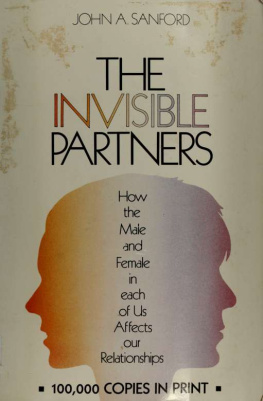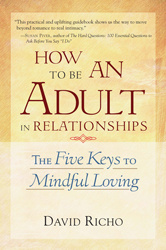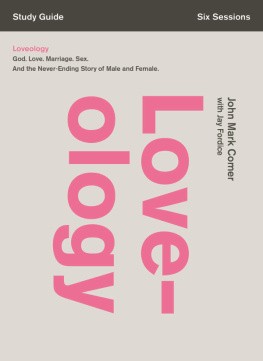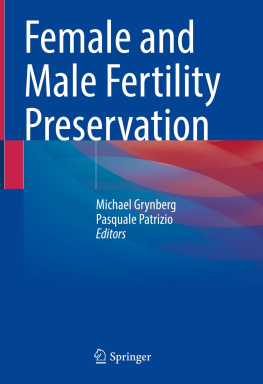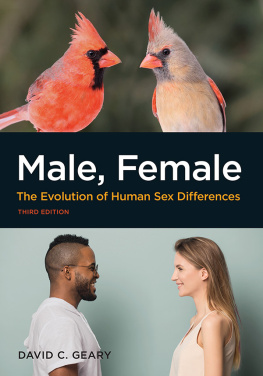John A. Sanford - The Invisible Partners: How the Male and Female in Each of Us Affects Our Relationships
Here you can read online John A. Sanford - The Invisible Partners: How the Male and Female in Each of Us Affects Our Relationships full text of the book (entire story) in english for free. Download pdf and epub, get meaning, cover and reviews about this ebook. year: 1980, publisher: Paulist Press, genre: Science. Description of the work, (preface) as well as reviews are available. Best literature library LitArk.com created for fans of good reading and offers a wide selection of genres:
Romance novel
Science fiction
Adventure
Detective
Science
History
Home and family
Prose
Art
Politics
Computer
Non-fiction
Religion
Business
Children
Humor
Choose a favorite category and find really read worthwhile books. Enjoy immersion in the world of imagination, feel the emotions of the characters or learn something new for yourself, make an fascinating discovery.
- Book:The Invisible Partners: How the Male and Female in Each of Us Affects Our Relationships
- Author:
- Publisher:Paulist Press
- Genre:
- Year:1980
- Rating:4 / 5
- Favourites:Add to favourites
- Your mark:
- 80
- 1
- 2
- 3
- 4
- 5
The Invisible Partners: How the Male and Female in Each of Us Affects Our Relationships: summary, description and annotation
We offer to read an annotation, description, summary or preface (depends on what the author of the book "The Invisible Partners: How the Male and Female in Each of Us Affects Our Relationships" wrote himself). If you haven't found the necessary information about the book — write in the comments, we will try to find it.
John A. Sanford: author's other books
Who wrote The Invisible Partners: How the Male and Female in Each of Us Affects Our Relationships? Find out the surname, the name of the author of the book and a list of all author's works by series.
The Invisible Partners: How the Male and Female in Each of Us Affects Our Relationships — read online for free the complete book (whole text) full work
Below is the text of the book, divided by pages. System saving the place of the last page read, allows you to conveniently read the book "The Invisible Partners: How the Male and Female in Each of Us Affects Our Relationships" online for free, without having to search again every time where you left off. Put a bookmark, and you can go to the page where you finished reading at any time.
Font size:
Interval:
Bookmark:

This book made available by the Internet Archive.


Acknowledgments
I am indebted to my good friend, The Rev. Morton T. Kelsey and my friend and colleague Gilda Frantz for reading the manuscript and giving me the benefit of their comments; and to my wife, Linny, for her many helpful suggestions, and to Helen Macey for her invaluable help with the preparation of this manuscript.
DoottodtaeflfeoD
The subject of men and women, of the nature of the masculine and the feminine, always arouses our interest, especially now, when men and women are trying, as never before, to understand themselves, and when the roles of the sexes and their relationship to each other are being reexamined. It is also a practical subject, promising to give us useful information that we can apply directly to ourselves and to our personal relationships.
One of the most important contributions of the Swiss psychiatrist C. G. Jung lies in this area. In his concepts of the anima and animus Jung makes a unique addition to our understanding of ourselves as men and women. In fact, it can be said that among the psychologists of this century only Jung has differentiated the psychology of men and women, and has shown us how they interrelate. It is because of the great interest today in the psychology of the sexes, and because there is no readily available volume that brings together Jung's most important ideas in this regard, that I have written this book.
It is for people to whom Jung's ideas on the masculine and feminine are new, as well as to those who already have experience in Jungian psychology and may be interested in the important discussions that have taken place regarding the masculine and feminine where the issues are not yet decided. Although I have tried to pull together the many threads of Jungian thought on this subject, the interested reader may wish to go more deeply
into it, so there is a selected bibliography at the back. Let this book stand as an introduction, and a survey of a rich and varied subject, but not as the final work in a field of knowledge that will call for much more discussion and further investigation. In dealing with the masculine and the feminine we are, in the final analysis, discussing the human soul, and about this much more still remains to be discovered.
SfooptfQff GD
Men are used to thinking of themselves only as men, and women think of themselves as women, but the psychological facts indicate that every human being is androgynous. 1 "Within every man there is the Reflection of a Woman, and within every woman there is the Reflection of a Man," writes the American Indian Hyemeyohsts Storm, who is stating not his own personal opinion, but an ancient American Indian belief. 2 The ancient alchemists agreed: "Our Adamic hermaphrodite, though he appears in masculine form, nevertheless carries about with him Eve, or his feminine part, hidden in his body." 3
Mythology, and ancient traditions, which frequently express psychological truths that otherwise would elude our attention,
1 The word androgynous comes from two Greek words, andros and gynos, meaning "man" and "woman" respectively, and refers to a person who combines within his or her personality both male and female elements. The word hermaphrodite is an analogous word. It comes from the Greek god Hermaphro-ditus, who was born of the union of Aphrodite and Hermes and embodied the sexual characteristics of both of them.
2 Hyemeyohsts Storm, Seven Arrows (New York: Harper and Row, 1962), p. 14.
3 From the alchemical treatise Hermetis Trismegisti Tractatus vere Aur-eus,\6\0, quoted by C. G. Jung in Letters, Vol. I, (Princeton, N.J.: Princeton University Press, 1973), p. 443; and cf. Letters, Vol II, (Princeton, N.J.: Princeton University Press, 1975), p. 321 n. 2.
often state this belief in the sexual duality of human nature. In the Book of Genesis, for instance, we read that God was an androgynous being, and that the first human beings, being created in His 4 image, were therefore likewise male and female: "On the day God created Adam," begins the fifth chapter of Genesis,"he made him in the likeness of God. Male and female he created them. He blessed them and gave them the name Man." We are also told in the second chapter of Genesis that when God wished to make woman He put Adam into a deep sleep, removed a rib from his body, and made Eve from Adam's rib. Clearly the original man, Adam, was thus both male and female. From this early division of the originally whole, bisexual human being comes the longing, through sexuality, for the reunion of the severed halves. The second chapter continues: "This is why a man leaves his father and mother and joins himself to his wife, and they become one body." 5
This idea that the original human being was male and female is found in numerous traditions. For instance, both the Persian and Talmudic mythologies tell how God first made a two-sexed beinga male and a female joined togetherand then later divided that being into two. This first, original man was often represented as having extraordinary qualities, as found in the extremely widespread image of the Anthropos, or Original Man, so often referred to in the writing of C. G. Jung and his colleagues. 6 It is a thought expressed most succinctly, perhaps, in Plato's Symposium. Here Plato's character Aristophanes retells an ancient Greek myth about the original human beings, who were perfectly round, had four arms and four legs, and one head with two faces, looking opposite ways. These human spheres possessed such marvelous qualities and great intelligence that they rivaled the gods who, acting out of envy and fear, cut the spheres in two in order to reduce their power. The original, spherical beings fell
4 Wherever possible I will try to avoid using the masculine to refer to God or mankind, but common usage and the awkwardness of our language prevent my being completely consistent.
5 Gen. 2:24.
6 For a summary of the idea of the Anthropos see Marie-Louise von Franz, Individuation in Fairy Tales (Zurich: Spring Publications, 1977), pp. 90tT.
apart into two halves, one feminine and one masculine. Ever since then, so the story goes, the two severed parts of the original human being have been striving to reunite. "And when one of them meets his other half," Aristophanes informs us, "the actual half of himself,... the pair are lost in an amazement of love and friendship and intimacy, and one will not be out of the other's sight... even for a moment: these are the people who pass their whole lives together; yet they could not explain what they desire of one another." 7
Storm's intuition that each man contains the reflection of a woman, and vice versa, is also reflected in shamanism. The shaman, the primitive healer or "medicine man," often has a tutelary spirit who assists him in the work of healing and teaches and instructs him in the healing arts. In the case of a male shaman, this tutelary spirit is female and acts like a spirit wife to him. In the case of a shamaness the tutelary spirit is male, and is her spirit husband, whom she has in addition to her flesh-and-blood husband. The shaman is unique partly because he or she has cultivated a special relationship to the other half of his or her personality, which has become a living entity, a real presence. A spirit wife says to her shaman husband, "I love you, I have no husband now, you will be my husband and I shall be a wife unto you. I shall give you assistant spirits. You are to heal with their aid, and I shall teach and help you myself." The shaman comments, "She has been coming to me ever since, and I sleep with her as with my own wife." 8
Font size:
Interval:
Bookmark:
Similar books «The Invisible Partners: How the Male and Female in Each of Us Affects Our Relationships»
Look at similar books to The Invisible Partners: How the Male and Female in Each of Us Affects Our Relationships. We have selected literature similar in name and meaning in the hope of providing readers with more options to find new, interesting, not yet read works.
Discussion, reviews of the book The Invisible Partners: How the Male and Female in Each of Us Affects Our Relationships and just readers' own opinions. Leave your comments, write what you think about the work, its meaning or the main characters. Specify what exactly you liked and what you didn't like, and why you think so.

